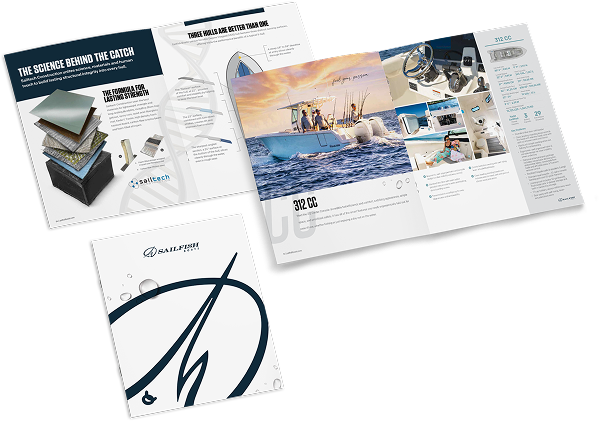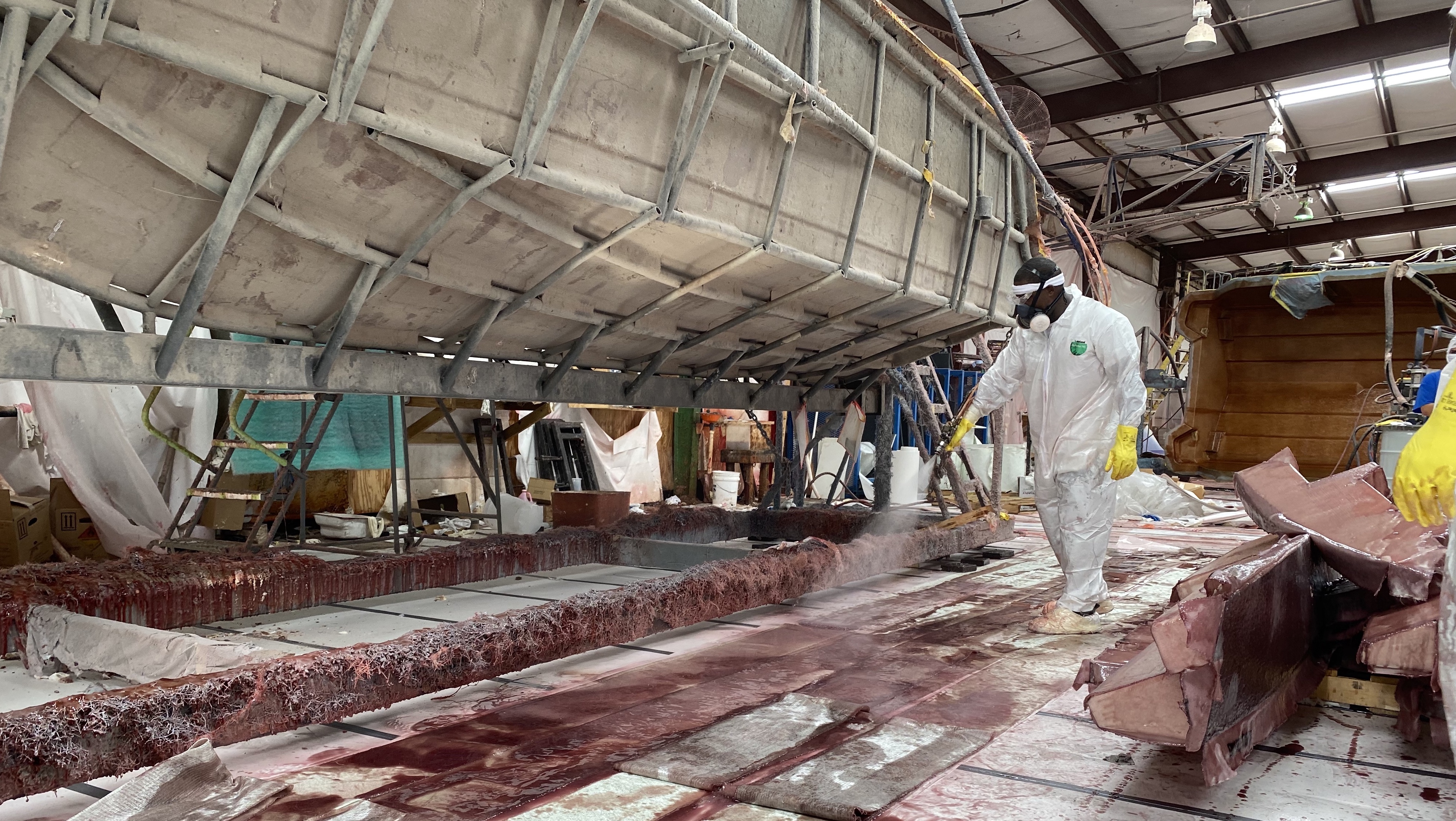DESIGN & TECHNOLOGY

Sailfish Care Advice from Professional Detailers
By: Sailfish Boats / Posted:22/02/2024 05:56PM
Want to keep your Sailfish looking tip-top? You will be rewarded by paying attention to the details. Follow these professional cleaning and maintenance tips and techniques:
MAINTENANCE WASHES
Essential to remove salt buildup and residue, bird staining, grime, and contaminants that can damage your gelcoat. A cheap boat wash can remove wax which can increase issues with oxidation. Frequency: minimum of once a month if waxed or ceramic coated
GELCOAT
Wax – A coat of wax will protect your gelcoat against oxidation (chalky/cloudy appearance) and UV fading. Wax also resists grime and salt buildup while making cleaning easier.
Frequency: every 3 to 4 months if you use your boat often or if it’s left unprotected to the elements, every 6 months otherwise.
Ceramic Coating- While wax provides a layer of protection on top of gelcoat, ceramic is chemically bonded to it. It is much more durable than wax, providing protection against UV fading, heat, environmental contaminants, light scratches, and harsh chemicals. Ceramic coatings can last over 18 months compared to six (see above). Ceramic coating will not only protect your boat but will also make regular washes easier and quicker. Unlike wax, ceramic coating can be applied to almost any surface.
Frequency: every 18 months
Polish- removes light oxidation and swirls. If your boat is not consistently protected by a coat of wax or ceramic, you will find that polishing is needed much more often. If polish isn’t sufficient to remove the oxidation, compound or wet sanding may be required. It is much easier and far cheaper to maintain the look of your boat through consistent washes and waxing than it is to polish/compound/wet sand to try to recover your gelcoat’s shiny surface.
OTHER MATERIALS
Metal- Exposed metal should be cleaned to prevent rust/corrosion and pitting – using fresh water and a mild soap. Avoid chemicals containing ammonia, chlorine, or salts as they can be damaging. Use a metal polish for a deeper clean and to provide a protective layer for a few months. Protection varies depending on the polish used.
Frequency: Every two weeks (minimum)
Teak- Clean your teak weekly with fresh water, mild soap, and a soft brush. For heavily soiled teak, a two-step cleaning process is necessary. Using acidic, two-step teak cleaners can end up breaking down the fibers and necessitate teak replacement. Sealing the teak with a quality product provides a layer of protection that will resist UV fading (grayish teak) and repel dirt and water for up to 6 months. A quality sealer is key to maintaining the color and finish of your teak. If teak isn’t regularly cleaned and protected, it can result in sanding being required to restore its appearance. This step can only be repeated a limited number of times before costly replacement is unavoidable.
PRODUCT RECOMMENDATIONS
Soap – Always use a soap designed for boats that is non-toxic and biodegradable. A wash and wax marine soap will add gloss and a very light coat of wax will remain to help protect from UV and stains. A non-marine degreasing soap such as Dawn will remove protective layers of wax from your boat.
Wax – A paste wax will tend to provide the longest-lasting protection, which is the primary function of a wax. Liquid waxes such as a spray-on carnauba wax are easier to apply and will provide gloss but are not very protective or long-lasting. If your gelcoat has some light oxidation, a cleaner wax (sometimes called an All-In-One wax) incorporates a mild abrasive that can help polish away some oxidation while providing a layer of protection.
Brushes – For delicate surfaces such as vinyl or acrylic, a super-soft brush is recommended. A soft brush can be used on fiberglass or teak with a light touch. A stiffer brush should only be used on a surface such as non-skid. For teak, check the manufacturer’s recommendation on whether to scrub with or against the grain – generally, against the grain is most common. Going with the grain can remove larger amounts of the softer wood between the grains, which can eventually cause a slightly uneven surface.
Microfiber vs Regular Towels – Microfiber tends to be softer than regular cotton towels, dry quickly, are more absorbent, attract dirt and bacteria, and are safe to use on most surfaces.
Microfiber vs Chamois – Both will work fine for drying. For larger boats, chamois can be easier to wring out. However, you will want to make sure the surface is completely clean as a chamois mop can pick up dirt very easily resulting in scratches to the surface. Microfiber can absorb more dirt before it becomes an issue however a dirty microfiber towel can also scratch surfaces.
Magic Erasers – There is a lot of debate in the boating community about using Magic Erasers as they are abrasive – the last thing you want to do to gelcoat is take off a layer. Magic Erasers can be used to lightly clean vinyl as well as scuffs or stains on fiberglass. Magic Erasers should always be used with a light touch while wet, no matter what surface you’re cleaning. Some brands of Magic Erasers are more abrasive than others. Using a Magic Eraser will dull a glossy surface and remove wax. It is generally recommended to only utilize Magic Erasers in limited areas and on surfaces that are not waxed. Treat a Magic Eraser as a very fine sandpaper.
Need more advice or service? Contact our recommended experts at All Class Detailing, based in Fort Lauderdale, FL. All Class provided this guideline and offers boat detailing services up and down the East Coast, from Rhode Island to Miami. They know a thing or two about proper maintenance of a Sailfish boat and pay close attention to the ‘details’ (pun intended).
Search
Subscribe to The Catch




















